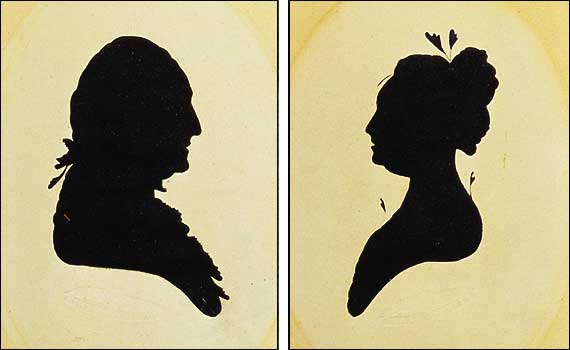
Madeleine Smith (abt 1835-1920) was a Glasgow socialite involved in a sensational murder case in Scotland during the summer of 1857. The notoriety of the case was such that it was known not only in Great Britain, but also in Europe and America.
Madeleine came from a wealthy, upper class family. Her father was well known architect James Smith. Madeleine went to boarding school in London and returned to Glasgow when she was 18. Not long after this she met Pierre Emile L'Angelier.
Emile L'Angelier was a French nurseryman and warehouse clerk who had moved to Glasgow in 1852. Glasgow is where Emile first took notice of the beautiful Madeleine Smith. Emile then began to search for a mutual acquaintance who could introduce them, as was the custom of the time in polite society. In the spring of 1855 the two finally met.
It was not appropriate for a lady of the upper class and a warehouse clerk to be seen together, but Madeleine found him exciting and exotic so she commenced correspondence with him. Meetings between the two were arranged and when Madeleine's father found out he demanded an immediate end to the friendship. Despite her father's forbiddance, Madeleine continued to secretly meet with Emile.
The correspondence continued, and they would refer to each other as
husband and
wife. Their romance intensified and they began planning their wedding and in the summer of 1856, the unthinkable taboo of Victorian times was broken - they became lovers.

All the while Madeleine's parents, unaware of their daughter's affair, were searching for a suitable husband for their daughter. They finally settled on William Minnoch. In September of 1856 he stayed with the Smiths at their summer home in Helensburgh where he and Madeleine spent some time together. Madeleine accepted William's marriage proposal in January 1857.
Madeleine wrote Emile in February to sever all ties with him. Emile, however, refused to comply and instead he threatened to show all the letters he had kept to Madeleine's father (they had wrote some 250 love letters between them). Madeleine wrote more letters begging Emile not to expose their actions to anyone and requested that he meet her in secret.
Emile L'Angelier is what they called an "
arsenic eater", meaning he would take arsenic for various 'health benefits'. Around this time (February 1857) he began to complain of stomach pains and nausea. He told a friend
he did not know why he felt so sick after taking coffee and hot chocolate with Madeleine. He also claimed that
if she were trying to poison him he would forgive her. During this time Madeleine had gone to a few local apothecaries and bought arsenic which she claimed to be for killing rats (this is known because she had to sign the poison book as was required).
Emile died the 23rd of March 1857 of arsenic poisoning. Madeleine, at 22 years old, was arrested on the 31st of March (based on the stack of letters found). When questioned about the arsenic she purchased (3 separate occasions) Madeleine claimed she bought it to mix with water and use on her face and arms for her complexion.
The case of Madeleine Smith was moved from Glasgow to Edinburgh due to such strong, popular interest. The news of the case was in papers in both America and Europe. The evidence in the case was this:
Evidence against Madeleine
Her letters obviously threatened her with scandalHer insistence that Emile meet with herShe bought three doses of morphine shortly before Emile diedOn the morning of Emile's death, she left her home and travelled alone to the family summerhouse in RhuShe had carried out a clandestine love affair and was clearly capable of deceitWhen her fiancé Minnoch caught up with her, she said she was ashamed of something she had done.
Evidence against Emile
Killing Emile would not have averted the scandal, as he still had possession of the lettersThere is only Emile's notebook to prove that they did actually meet – no one witnessed any meetingsShe bought the first dose of arsenic after Emile first records feeling unwellThe morphine she bought was coloured with soot; the morphine found in Emile's stomach was white. (Arsenic sold in chemists was routinely coloured to differentiate it from other household products like flour.)
Emile's friends testified to his use and knowledge of arsenic. Indeed Chambers Journal (July 1856), which he had read, suggests that people who dabbled with arsenic write a letter exonerating friends lest they become implicated in murderOn July 9th 1857 the jury reached a verdict of 'Not Proven' which in Scottish law means there was not enough evidence to prove she was guilty.
He told his friends that he wanted revenge on Madeline
Emile "coached" Miss Perry, suggesting the notion of poison to her. On the night he took ill, he asked for her – in the expectation that she would alert doctors to the possibility of arsenic poisoning. Fatefully she was delayed in arriving, and by then it was too late.
After this Madeleine disappeared from society. It is believed that she had moved to America where she lived in New York City and died there under the name Lena Wardle Sheehy in 1928, but this is highly unlikely since according to the death certificate Madeleine would have been born 30 years before this woman. There are other theories that she went to Australia or New Zealand, but no one knows for sure whatever happened to Madeleine Smith.
William Minnoch's grave can be found in the Glasgow Necropolis: you can see a picture of his monument here.
*Pictures: Madeleine Smith at her trial and 7 Blythswood Square, Glasgow, where the Smiths lived.
*Sources: A Most Curious Murder, Crime Library and The Scotsman




















































